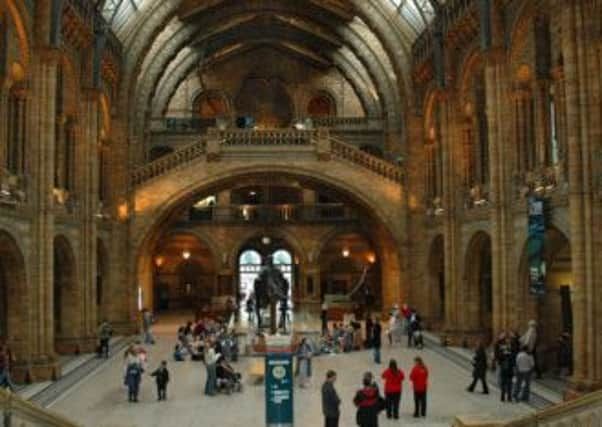‘Plot to kidnap’ Loch Ness monster revealed by Sheffield academic


The documents show placing a bounty on Nessie’s head had made it a matter of national pride who ended up with the remains.
The Scottish Office opened a file on the monster in December 1933 in Edinburgh after being bombarded with Press inquiries. But “Nessie Files” have also been found at the Natural History Museum in London – and the recently revealed contents do no favours for Anglo Scottish relations.
Advertisement
Hide AdAdvertisement
Hide AdThey show by 1934, only a year after the first sightings on the Loch, the Natural History in Museum in London and the Royal Scottish Museum in Edinburgh wanted Nessie – dead or alive.
But while Scotland hoped that the bounty hunters could be kept at bay long enough to get new laws passed to protect the creature, London preferred it shot on sight.
In March 1934, an unnamed official at the National History Museum made no bones about how they thought bounty hunters should deal with the creature. According to more files found in Edinburgh, pressure was growing for a special Act of Parliament to prevent Nessie being killed or captured.
The campaign was led by Inverness MP Murdoch MacDonald who assured the Secretary of State for Scotland Sir Godfrey Collins the creature was no myth. He demanded a Bill be put before Parliament to protect the creature and asked Sir Godfrey what could be done to spare it from harm in the meantime.
Advertisement
Hide AdAdvertisement
Hide AdSir Godfrey was advised there was “no law for the protection of Monsters” and “great fish, including those of no known denomination, may be claimed by The Crown”.
By this time, the threat to Nessie had reached the ears of the bosses of the Royal Scottish Museum – who wrote to the Secretary of State for Scotland in 1934, staking Edinburgh’s claim to the carcass.
“The museum urges strongly that the RSM have the revertionary rights to the ‘Monster’ if and when its corpse should become available,” the letter pleaded.
Sir Godfrey said: “We think the Monster should not be allowed to find its last resting place in England. Such a fate would surely outrage Scottish nationalism which at the moment is thriving greatly under the Monster’s beneficent influence.”
Advertisement
Hide AdAdvertisement
Hide AdThe story that Nessie was another source of division between Scotland and England was uncovered by Sheffield author David Clarke for his new book Britain’s X-traordinary Files.
He said: “Many influential people – including MPs and famous naturalists like Sir Peter Scott –believed in the existence of Nessie.
“During the 1930s the Monster became an important symbol for Scottish Nationalists who wanted the police to protect the creature from big game hunters.”